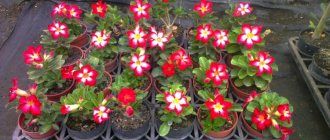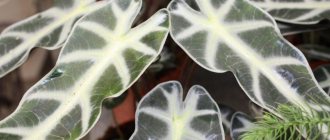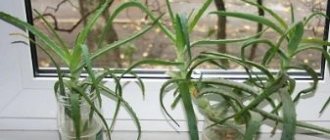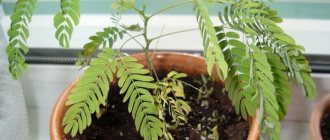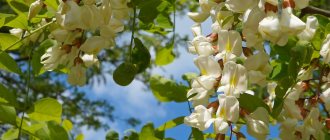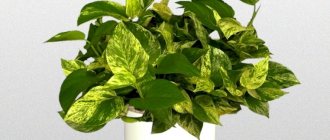Many people associate cypress with summer, fresh air and even the sea. In the conditions of the middle zone, it will not be possible to have such a plant on your personal plot, but you can give yourself the smell of good mood and freedom if you plant an indoor type of cypress.
You should familiarize yourself in advance with the characteristics of a particular species, as well as the rules for the care and maintenance of this exotic plant.
What does it look like
Today, over 166 species of cypress are known, but not all of them are suitable for growing in a pot indoors. The plant grows slowly and has a pleasant characteristic aroma. At the same time, it not only purifies the air in the room, but also repels moths.
Features of caring for this indoor flower
In gardening, cypress has proven itself to be a rather unpretentious plant, but in indoor conditions, cypress shows some capriciousness. So how can you care for it at home and can you keep it there?
A nuance immediately after purchase
In flower shops, cypress trees grow in transfer pots, inside of which there is peat. Most often, the plant is very cramped in such a container, and its root system just begs to come out. Therefore, an evergreen tree needs to be replanted as soon as possible. After purchasing, you need to wait 6-7 days and transplant the cypress into a new, convenient pot. The above time is necessary for acclimatization.
When purchasing cypress, be careful. Plants like Kochia and Taxodium are very similar to what you need. Kochia is not evergreen, and Taxodium, although a cypress family, is deciduous.
Trimming
Some gardeners are inclined to believe that it is undesirable to prune indoor cypress, since its crown does not grow in large volumes. But most still recommend pruning. Cypress, depending on the variety, can be given the following forms:
- Ball.
- Cone.
- Spiral.
ATTENTION! In the last version you need to try really hard to make it really beautiful. If you have no experience in this matter, then it is better not to take risks, otherwise the plant will look, to put it mildly, unspectacular.
Pruning is carried out in the spring, when the plant is completely dry. It cannot be sprayed before the procedure. Excess shoots are removed entirely (cutting them in half is prohibited).
If necessary, pruning can be done in the fall.
Lighting
Cypress loves light very much, but does not accept direct rays of the sun. The ideal option is year-round diffused lighting.
If your plant is on a windowsill on the west or east side, it will need to be shaded at certain times. Accordingly, in summer the cypress is not placed on the south window; it will only be good in this part of the house in winter.
Lack or excessive amount of light is harmful to cypress , as it will negatively affect the development and growth of the plant. In the first case, the branches will stretch strongly upward and crumble, in the second case they will turn yellow.
Temperature
When growing cypress at home, it is very important to observe seasonality. Consider the fact that the natural conditions of the plant are subtropical.
The optimal temperature for cypress in summer is 20-30 degrees Celsius. But in winter you need to create conditions of about 5-10 degrees Celsius. During frosts, the root system of the plant freezes completely.
How to plant?
Planting and care at home is a simple procedure. If you have already bought an adult tree, you only need to replant it after acclimatization. The pot should be 3-4 times larger than the root system of the plant. It is best to choose a clay container. In plastic pots, the soil dries out quickly and cools down in winter, which will negatively affect your pet.
You can also purchase seeds at a flower shop, or remove brown seedlings from a pine cone. The landing scheme in this case is as follows:
- Seeds are planted in wide bowls.
- After 14-20 days the first shoot appears.
- After 30 days, tiny cypress trees can be planted in permanent pots.
How to transplant?
Young specimens need frequent replanting. The procedure is carried out annually in late spring, but as it grows, the frequency decreases. Mature cypress trees are replanted only if necessary.
IMPORTANT! You need to replant very carefully and carefully, transferring the plant from one pot to another. The slightest damage to the root system will lead to the death of the cypress.
Subtleties of transplantation:
The container is selected several sizes larger than the previous one.- A drainage layer must be placed at the bottom (expanded clay, shards, sphagnum moss or coals can be used). The layer is a couple of centimeters.
- Pour a small layer of soil.
- Replant the plant.
- Add the required amount of soil on top so that it does not touch the neck of the root.
Possible problems in growing indoor cypress
Problems arise during cultivation due to non-compliance with care rules or in the event of the appearance of diseases or pests.
Leaves turn yellow and fall off
This can happen when there is not enough moisture or the air is not humidified or the spruce branches are not sprayed. If you provide the plant with sufficient moisture, the leaves will be healthy and beautiful and will stop turning yellow.
The tips of the leaves are drying out
Foliage may dry out when moisture stagnates in the ground. As a result, the roots began to rot, and this led to the rapid drying of the tips of the leaves. Damaged parts of the roots must be removed and the plant replanted.
Pests
They are especially dangerous for cypress when it lacks moisture. The appearance of a spider mite can be determined by the large number of cobwebs on the plant. A scale insect attack is also dangerous.
To control these insects, spraying with appropriate insecticides is an effective method.
Soil for the plant
Soil for cypress can be bought at the store; substrate for coniferous plants is suitable. The optimal mixture for full growth:
- Leaf soil - two parts.
- Sod land - three parts.
- River sand (coarse) – one part.
The soil must be loosened, otherwise the plant will die. A drainage layer is necessary to prevent water stagnation at the roots.
If you decide to feed your “pet,” buy fertilizer at a flower shop that is intended specifically for this plant. Garden fertilizers cannot be used.
Earth mixture
Cypress requires a nutritious and permeable soil mixture. You can use an earth mixture of turf, leaf and coniferous soil with the addition of coarse sand (2:1:1:1) or turf and leaf soil and sand (4:2:1). Bonsai soil mixture is also suitable for cypress. It is useful to mix bone meal fertilizers with the soil mixture. But even in the usual earthen mixture for indoor plants, cypress grows normally, at least I did not notice any deviations in growth.
Place good drainage from old clay shards, broken red brick or expanded clay at the bottom of the container or pot. For stability (if the cypress crown is already large), you need to add sand to the bottom of the container; its layer, together with drainage, can be up to ¼ of the height of the container.
When replanting, cypress cannot be buried, so you need to make sure that the root neck of the cypress is at the same level.
How does it reproduce?
Cypress can be propagated in two ways: by seed and cuttings.
Seminal
- After purchasing seeds, they need to be stratified (treated with cold). To do this, the seed material is placed in the refrigerator for 3 months.
- Before planting, the seeds are soaked in warm water for 24 hours.
- Planting is carried out in boxes where the drainage is crushed bark, and the main soil is sawdust mixed with sand. The containers are placed in a dark place, the soil is constantly moistened.
- The seeds germinate partially. Those that have successfully made it, when they reach 5-6 centimeters, are sent to separate pots.
Read more about growing cypress from seeds here.
Cuttings
- When pruning a tree, cuttings with a “heel” are cut.
- The leaves are removed from the petioles. Place them together in the “root” solution for 24 hours.
- The media is sprinkled with crushed coal.
- Petioles are planted in the same soil as for seed propagation. The third part should go deeper.
- The soil is moistened.
- Cover the material with glass jars. Ventilation is carried out every week for about an hour.
- In a couple of months, rooting will occur.
Reproduction methods
Breeding conifers is possible by seed and vegetative methods. The first is rarely used because it takes a lot of time and is quite labor-intensive. The vegetative method involves rooting cuttings or growing layering. Regardless of the method chosen, spring is considered the optimal time for cypress propagation. Planting material should be taken from healthy adult specimens. Seeds can be purchased at a garden center, ordered from an online store, or collected from your own plant at home.
Breeding conifers is possible by seed and vegetative methods.
On a note! Propagation by seeds does not preserve the varietal characteristics of the plant, but this will only be possible to find out after a few years, since they do not appear immediately.
Seeds
The germination of coniferous seed material lasts for about 15 years when stored in sealed packaging at a temperature of +0–5 °C. Before sowing, it is necessary to carry out stratification for 2–3 months in a damp mixture of peat and sand in the refrigerator. Afterwards, transfer the container to a well-lit room at +18–22 °C. Create greenhouse conditions by covering with glass or a bag. Periodically ventilate for a couple of minutes, water, and remove accumulated condensation.
It is permissible to plant seedlings when they grow up to 5 cm. In a mixture of peat and sand, subject to regular feeding, the cypress tree can be left until next spring. Seedlings must be protected from drafts, sudden changes in maintenance conditions, and direct sunlight. In winter, be sure to reduce the room temperature to +10 °C. Before the start of active growing season, transplant the grown seedlings as independent plants.
It is permissible to plant seedlings when they grow to 5 cm.
Cuttings
Planting material: shoots from this or last year. Cuttings that are in the active growth stage take root poorly. The optimal length of material for cuttings is 5–15 cm, for low-growing varieties — 5–7 cm. Clear the lower part of the needles, bury the prepared end into a damp mixture of peat and sand.
How to care for cypress cuttings:
- create greenhouse conditions using a glass jar, bag or cut plastic bottle;
- place on a well-lit windowsill out of direct sunlight;
- Ventilate the greenhouse periodically;
- water as needed;
- After rooting, transplant into an individual container as an adult plant.
The optimal length of material for cuttings is 5–15 cm, for low-growing varieties — 5–7 cm.
By layering
This propagation method is suitable for varieties with an open crown shape. Upright bushes produce crooked plants. Place another container filled with nutrient substrate next to the flower pot. Bend a branch of a domestic cypress tree, slightly cut the bark at the junction with the soil, and secure the shoot with a metal bracket or stone. Sprinkle with soil and moisten. Caring for the layering consists of periodic watering, loosening the soil, and spraying the above-ground part with warm water. When the root system is formed, separate the seedling from the mother plant and transplant it into its own pot.
This propagation method is suitable for varieties with an open crown shape.
Watering and air humidity
In summer, cypress consumes a lot of liquid and needs frequent watering. It is recommended to water the cypress tree daily in the summer.
At the same time, the main thing is not to overdo it, otherwise the root system will begin to rot. In hot weather, the plant needs to be sprayed (only with settled water at room temperature).
In winter, watering is reduced. Settled water is also used.
Transfer
Cypress tolerates replanting normally, even twice a year: at the beginning of summer it can be planted in open ground in the garden, at the end of summer - beginning of autumn again in a pot or container. The main thing is to have time to replant the cypress back before cold nights, when the air temperature outside and in the room are not much different, then the cypress does not get sick at all when moving back to the room.
If you do not plan to plant cypress in open ground, then in the spring, in March-April, when young shoots appear at the ends of the cypress branches, it is time to transplant it into another pot or container.
It is necessary to replant cypress in the following cases:
when the earthen lump is entwined with roots so much that a continuous felt is formed from the roots; if the roots have broken through the drainage hole at the bottom of the pot; if the crown is too large and the pot may fall;
if the soil in the pot has become sour and the cypress begins to gradually wither (in this case, the transplant may be unscheduled). Most likely, the pot was too big.
The transplant can be:
- complete, when all the old soil is completely removed from the roots, such a transplant is practiced when growing bonsai;
- incomplete, when part of the old soil remains on the roots;
transfer, when a smaller pot is completely transferred from a smaller pot without disturbing the earthen coma to a larger one; fresh soil is simply added to the edges of the pot;
- if the cypress is already large, then you can only replace the top layer (3-4 cm) of soil in the pot with fresh soil;
- sometimes, instead of replanting, you can limit yourself to applying fertilizers.
Benefits and harms
The benefits of cypress in the home are very significant.
Useful qualities
First of all, cypress will fit perfectly into the interior before the New Year. Put some tinsel on it and you have a Christmas tree.
The wood of the plant secretes phytoncides , which kill moths and suppress the development of microbes, staphylococcus and E. coli.
The climate in the room where cypress grows is very pleasant, filled with a pine aroma.
REFERENCE! According to Church tradition, cypress is a tree from the Garden of Eden, which is a symbol of eternal life.
Medicinal properties
Pros of growing cypress indoors:
You provide your family with excellent prevention against bronchitis and colds.- The plant is recommended to be grown by those people whose cough is asthmatic in nature.
- Cypress will benefit those who want to quit the bad habit of smoking.
- The subtle aroma of essential oil calms the nervous system.
As a result, we can say that cypress does not cause any harm. Caring for cypress at home is not very easy, but it is worth it. As a result, you will receive not only a beautiful plant, but also undoubted benefits for your health.
What kind of cypress can you grow in a pot?
The Cypress family includes a large number of genera and species. Cypress, thuja and juniper are the most famous of them.
Common varieties
There are few domestic cypress trees. These plants are distinguished by their slow growth. Next we will talk about the most popular of them.
- Evergreen has a pyramidal crown and leaves pressed to the trunk. It grows up to 2-3 m. There are small horizontal and pyramidal varieties, which got their names because of the shape of the crown.
- The height of the large-fruited tree reaches 2 m. Its lower branches are dark green, and the upper ones are light green. The Goldcrest variety is popular, having golden needles and a lemon aroma. It is also called New Year's cypress.
Indoor cypress trees fill the room with an incredible aroma
Among these or other species and varieties, you can choose the most suitable cypress or cypress tree; home care for it should be provided in accordance with the characteristics of the culture.
For your information! Cypress trees are native to the Mediterranean, Far East, Black Sea and North America. These plants have existed on the planet since the Cenozoic era.
Top dressing
From May to August, cypress is fed with complex mineral fertilizer for coniferous plants, or liquid mineral fertilizer for decorative indoor plants, halving the recommended dose. I even applied complex mineral fertilizers (ammophoska) in dry form: I placed several granules (5 pieces) on damp soil in a pot, followed by shallow loosening. The cypress reacted normally to this and reacted with rapid growth of new shoots. But I practice this feeding only during the period of active growth - in the spring, early summer, and later I limit myself to liquid feeding.
In spring and early summer, cypress is very responsive to the application of organic fertilizers, such as a solution of mullein or bird droppings - any (pigeon, sparrow) droppings will do, literally a pinch per 1 liter of water. Stir the solution thoroughly, let it stand, you can water the cypress with it once every two weeks.
If the cypress is already large and is not replanted every year, then it is advisable to apply fertilizer during replanting; to do this, it is thoroughly mixed with the soil mixture so that the nutrients are evenly distributed in the ground.
Feeding is resumed no earlier than 1-1.5 months after transplantation.
General information
There are quite a few varieties of cypress; we will not dwell on the classification in detail, but we note that the large-fruited cypress species is well suited for home maintenance. This variety originated in California, and from this we can conclude that the large-fruited species needs a lot of light and warmth.
In the wild, the tree sometimes exceeds 25 meters in size, but its decorative version will not grow more than 2 meters. Convenient even for small apartments. By choosing a beautiful flowerpot, you can organize a small island of coniferous forest in your home, which will smell fragrant and look beautiful.
Cypress does not make any special requirements for living conditions, but we will still look at the parameters in which this tree should live.
Blunt cypress (blunt) (Cupressus obtusa)
Originates from the highlands of northern Japan. In nature it grows in high humidity. These are tall, fairly powerful trees, with a cone-shaped and dense crown. They can reach a height of 40 m. The branches are spaced apart, with shiny needles up to 2 cm. The cones are round, up to 1 cm in diameter. The bark is light brownish. Prefers fertile, regularly moist soils. Many original cypress trees have been bred with different crown shapes, density and color of needles. There are also quite a few dwarf varieties valued by designers.
Cypress "Nana Aurea (lat. Nana Aurea)"
Slow-growing, dwarf and therefore valuable variety. By the age of 10 it grows to 0.5-0.8 m, and the diameter barely reaches 0.5 m. The crown has an interesting shell-like shape. The shoots are short, twisted, with golden-yellow needles. The needles themselves are small, thin, tightly adjacent to each other. Prefers nutritious, regularly moistened soil. Widely used in Japanese gardens and is an excellent plant for alpine slides, all kinds of stone gardens, and rockeries.
Cypress "Nana Gracilis (lat. Nana Gracilis)"
A variety with a rounded crown and needles of a juicy, rich green, sometimes dark color. The branches are located quite densely. They curve intricately, reminiscent of twisted sea shells. This elegant dwarf variety develops slowly, growing by only 5 cm upward and 3 cm in width per season. Prefers fertile, acidic and moist soils. And also growing in partial shade. The variety is quite popular in Europe, used for planting on alpine hills. Among other things, it is excellent for creating heather gardens on acidic soils.
Cypress "Fernspray Gold"
An original, elegant, low tree with bright, beautiful colored needles. The maximum height in adulthood is 2.5-3 m, and the diameter is up to 1 m. Growth during the season is 5-7 cm. The branches are slightly arched, unevenly spaced from the trunk and strongly branched at the ends. Young growth with an interesting lemon tint. This variety is quite winter-hardy. Does not tolerate soil drying out.
The use of cypress in garden landscape design
Cypress trees in the garden are excellent as focal trees, and some dwarf conifers are slow-growing varieties, making them an ideal addition to a rock garden or as a border plant. An excellent option would be to plant trees in containers that can be located anywhere in your garden.
Cypress looks original in Bonsai
These coniferous plantings are also often found in coniferous compositions. Chamaecyparis is also a fairly frequent visitor to Bonsai culture.
Preparing for landing
Before planting a crop in a permanent place, it is necessary to carry out preparatory measures. If all growing conditions are met, the coniferous tree will soon delight you with its spectacular appearance.
First you need to choose a good place on the site. It should be open, well lit or slightly shaded. In this case, it is better to choose hills, no lowlands where moisture can stagnate, cold air predominates. The site must be protected from drafts and strong winds.
It is desirable that the soil for planting be:
- fertile;
- light;
- breathable;
- drained;
- moisturized.
Pest Control
It happens that pests infest indoor flowers, and this also applies to decorative cypress. Most often it is exposed to the harmful effects of aphids, spider mites and scale insects. As for the first two types of pests, you can get rid of them using special insecticides. The following control method must be used against scale insects: manually remove pests from the flower, and then try to wash all the needles and trunk with a soap or alcohol solution.
Home cypress is an original coniferous plant that will delight its owner and improve the health of indoor air if it is properly cared for. Simple rules - moist air, plenty of sunlight, a porous substrate and timely feeding - will allow you to grow a beautiful indoor flower. The main thing is to follow the rules and not abuse them!

